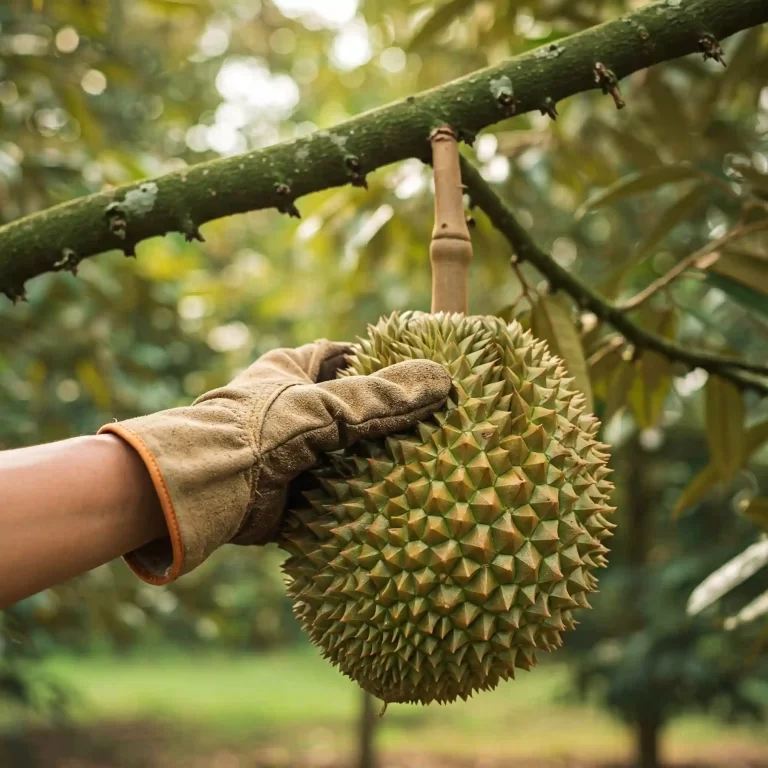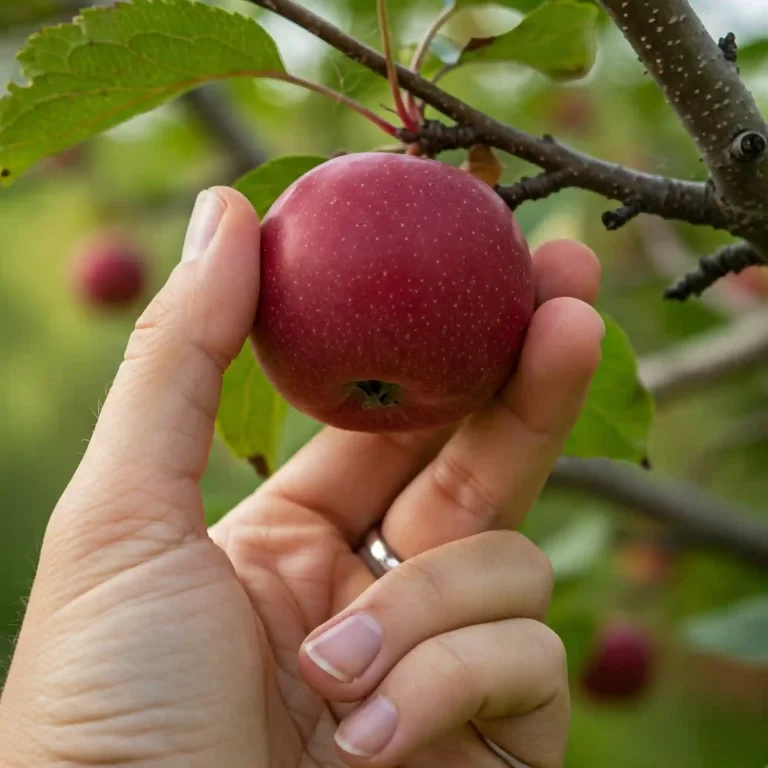As a gardener, you pour your heart and soul into cultivating a beautiful and productive garden. But all too often, your hard work is undone by deer that see your garden as an all-you-can-eat buffet. The frustration of waking up to find your plants nibbled down to stubs is all too real.
This isn’t just a minor inconvenience; it’s a significant setback. Deer can cause extensive damage, not only eating your plants but also trampling over your carefully tended beds. The emotional toll of seeing your efforts wasted can be disheartening, and the financial cost of replacing plants adds up quickly.
The good news is that there are effective solutions to keep deer out of your garden. Deer fencing is a proven method to protect your plants and ensure that your garden thrives. In this comprehensive guide, I’ll walk you through everything you need to know about deer fencing, from the different types available to installation tips and maintenance advice. Let’s dive in and reclaim your garden from these unwelcome visitors.
Why You Need Deer Fencing
Deer are beautiful creatures, but they can be a gardener’s worst nightmare. They are notorious for their ability to jump high and squeeze through small gaps, making it challenging to keep them out of your garden. Here’s why deer fencing is essential:
The Impact of Deer on Gardens
Deer can cause significant damage to gardens in several ways:
- Eating Plants: Deer have a broad diet and will eat a wide variety of plants, including flowers, vegetables, shrubs, and even young trees. This can devastate your garden, especially if you have invested time and money into growing specific plants.
- Trampling: As deer move through your garden, they can trample plants and compact the soil, which can damage root systems and hinder plant growth.
- Spreading Disease: Deer can carry diseases that may spread to your plants or even to humans and pets. For example, they can be carriers of ticks that spread Lyme disease.
Benefits of Installing Deer Fencing
Installing deer fencing offers several benefits:
- Protection: The primary benefit is protecting your plants from being eaten or trampled by deer. This ensures that your garden can grow and thrive without constant setbacks.
- Peace of Mind: Knowing that your garden is protected allows you to enjoy gardening without the stress of potential deer damage.
- Increased Property Value: A well-maintained garden can increase the aesthetic appeal and value of your property. Deer fencing helps maintain the beauty and productivity of your garden.
- Cost Savings: While there is an initial investment in deer fencing, it can save you money in the long run by reducing the need to replace damaged plants.
Case Study: Successful Deer Fencing Implementation
Consider the case of a community garden in a suburban area that was struggling with deer damage. The gardeners decided to invest in a high-quality deer fence. Within a few months, they noticed a significant reduction in plant damage. The garden flourished, and the gardeners were able to harvest a bountiful crop. This success story highlights the effectiveness of deer fencing in protecting gardens.
Types of Deer Fencing
There are several types of deer fencing available, each with its own advantages and disadvantages. Choosing the right type of fencing depends on your specific needs, budget, and aesthetic preferences.
Metal Wire Fencing
Pros:
- Durability: Metal wire fencing is highly durable and can withstand harsh weather conditions.
- Effectiveness: It provides a strong barrier that deer cannot easily break through.
- Longevity: With proper maintenance, metal wire fencing can last for many years.
Cons:
- Cost: It can be more expensive than other types of fencing.
- Installation: Installing metal wire fencing can be labor-intensive and may require professional help.
Best Uses:
- Ideal for large properties or areas with high deer populations.
- Suitable for gardens where long-term protection is needed.
Plastic Deer Fencing
Pros:
- Lightweight: Plastic fencing is easy to handle and install.
- Cost-Effective: It is generally more affordable than metal wire fencing.
- Visibility: Plastic fencing is less visible, which can be aesthetically pleasing.
Cons:
- Durability: It is less durable than metal wire fencing and may need to be replaced more frequently.
- Effectiveness: Determined deer may be able to push through or chew on plastic fencing.
Best Uses:
- Suitable for smaller gardens or areas with lower deer populations.
- Ideal for temporary or seasonal use.
Electric Deer Fencing
Pros:
- Deterrent: Electric fencing provides a strong deterrent, as deer quickly learn to avoid it.
- Flexibility: It can be easily adjusted or moved as needed.
Cons:
- Maintenance: Electric fencing requires regular maintenance to ensure it remains functional.
- Cost: It can be more expensive due to the need for a power source and regular upkeep.
Best Uses:
- Effective for high-traffic areas where deer are a persistent problem.
- Suitable for gardeners who are comfortable with the maintenance requirements.
Wooden Fencing
Pros:
- Aesthetic Appeal: Wooden fencing can enhance the look of your garden and property.
- Durability: It is sturdy and can provide long-term protection.
Cons:
- Cost: Wooden fencing can be expensive, especially for large areas.
- Maintenance: It requires regular maintenance to prevent rot and damage.
Best Uses:
- Ideal for gardens where aesthetics are a priority.
- Suitable for properties where a permanent, attractive solution is desired.
How to Choose the Right Deer Fence
Choosing the right deer fence involves considering several factors to ensure it meets your needs and preferences.
Factors to Consider
- Garden Size: The size of your garden will influence the type and amount of fencing needed. Larger gardens may require more durable and extensive fencing solutions.
- Budget: Determine how much you are willing to spend on deer fencing. While some options may have a higher upfront cost, they can offer long-term savings.
- Aesthetic Preferences: Consider how the fencing will look in your garden. Some types of fencing are more visually appealing than others.
- Deer Population: Assess the deer population in your area. Higher populations may require more robust fencing solutions.
- Maintenance: Consider how much time and effort you are willing to invest in maintaining the fence.
Comparison of Different Types of Fencing
| Type of Fencing | Durability | Cost | Maintenance | Aesthetic Appeal | Effectiveness |
| Metal Wire Fencing | High | High | Low | Moderate | High |
| Plastic Deer Fencing | Moderate | Low | Moderate | High | Moderate |
| Electric Deer Fencing | High | High | High | Moderate | High |
| Wooden Fencing | High | High | High | High | High |
Tips for Choosing the Right Fence
- Assess Your Needs: Consider the specific needs of your garden and property. This includes the size, layout, and the types of plants you are protecting.
- Research Options: Look into different types of fencing and read reviews from other gardeners to understand their experiences.
- Consult Experts: If you are unsure, consult with a fencing expert or a local garden center for advice on the best options for your situation.
Installation Guide for Deer Fencing
Installing deer fencing can be a straightforward process if you follow the right steps. Here’s a detailed guide to help you get started.
Tools and Materials Needed
- Fencing Material: Choose the type of fencing that best suits your needs.
- Fence Posts: These will support the fencing material. Choose sturdy posts that can withstand the weight and pressure.
- Post Hole Digger: For digging holes to place the fence posts.
- Wire Cutters: If you are using metal wire fencing.
- Staples or Clips: To attach the fencing material to the posts.
- Measuring Tape: To ensure accurate placement of posts and fencing.
- Level: To ensure posts are installed straight.
- Hammer or Mallet: For driving posts into the ground.
Step-by-Step Installation Instructions
- Plan Your Fence Layout: Determine the perimeter of the area you want to fence. Mark the locations for the fence posts.
- Dig Post Holes: Use a post hole digger to dig holes for the fence posts. The depth of the holes will depend on the height of the fence.
- Install Fence Posts: Place the posts in the holes and use a level to ensure they are straight. Fill the holes with soil and tamp it down to secure the posts.
- Attach Fencing Material: Unroll the fencing material and attach it to the posts using staples or clips. Make sure the fencing is taut and secure.
- Secure the Bottom: Ensure the bottom of the fence is secured to prevent deer from pushing underneath. You can use stakes or bury the bottom of the fence slightly.
- Check for Gaps: Walk around the perimeter of the fence to check for any gaps or weak spots. Make any necessary adjustments to ensure the fence is secure.
Tips for Ensuring a Secure and Effective Installation
- Height: Ensure the fence is at least 8 feet tall to prevent deer from jumping over.
- Tension: Keep the fencing material taut to prevent sagging and gaps.
- Gates: Install secure gates that are easy to open and close but difficult for deer to push through.
- Visibility: If using plastic fencing, consider adding markers or ribbons to make it more visible to deer and humans.
Maintenance Tips for Deer Fencing
Proper maintenance is essential to ensure your deer fencing remains effective over time. Here are some tips to help you keep your fence in top condition:
Regular Maintenance Tasks
- Inspect the Fence Regularly: Check your fence at least once a month for any signs of damage or wear. Look for loose posts, sagging sections, or holes in the fencing material.
- Repair Damage Promptly: If you notice any damage, repair it as soon as possible to prevent deer from exploiting weak spots. This might involve tightening loose wires, replacing broken posts, or patching holes.
- Clean the Fence: Remove any debris, such as leaves or branches, that may accumulate on the fence. This helps maintain its appearance and prevents additional stress on the structure.
- Check for Rust: If you have metal wire fencing, inspect it for rust. Treat any rust spots with a rust inhibitor to prolong the life of the fence.
- Maintain Electric Fences: For electric fences, ensure the power source is functioning correctly and that the wires are free from vegetation that could short-circuit the system.
Seasonal Maintenance Tips
- Spring: Inspect the fence for any damage caused by winter weather. Tighten any loose wires and replace any damaged sections.
- Summer: Ensure the fence is clear of overgrown vegetation that could weaken its structure or interfere with electric fences.
- Fall: Check the fence for damage from summer storms and prepare it for winter by reinforcing any weak spots.
- Winter: Regularly inspect the fence for damage caused by snow and ice. Clear any heavy snow buildup that could cause the fence to sag or collapse.
Cost of Deer Fencing
Understanding the cost of deer fencing is crucial for budgeting and planning. Here’s a breakdown of the costs associated with different types of deer fencing:
| Type of Fencing | Average Cost per Linear Foot | Installation Cost | Total Cost for 100 Feet |
| Metal Wire Fencing | $1.50 – $3.00 | $2.00 – $4.00 | $350 – $700 |
| Plastic Deer Fencing | $0.50 – $1.50 | $1.00 – $2.00 | $150 – $350 |
| Electric Deer Fencing | $2.00 – $4.00 | $3.00 – $5.00 | $500 – $900 |
| Wooden Fencing | $5.00 – $10.00 | $4.00 – $8.00 | $900 – $1,800 |
Factors Influencing Cost
- Material: The type of material used for the fence significantly impacts the cost. Metal and wooden fences are generally more expensive than plastic or electric fences.
- Labor: If you hire professionals to install the fence, labor costs will add to the overall expense. DIY installation can save money but requires time and effort.
- Fence Height: Taller fences require more materials and labor, increasing the cost.
- Fence Length: The longer the fence, the higher the total cost. Measure your garden accurately to estimate the required length.
- Additional Features: Gates, posts, and other accessories can add to the cost. Consider these when planning your budget.
Tips for Budgeting and Finding Affordable Options
- Compare Prices: Shop around and compare prices from different suppliers to find the best deals.
- Buy in Bulk: Purchasing materials in bulk can often reduce the cost per unit.
- DIY Installation: If you have the skills and tools, consider installing the fence yourself to save on labor costs.
- Look for Sales: Keep an eye out for sales or discounts at local garden centers or online stores.
DIY Deer Fencing Projects
For those who enjoy hands-on projects, DIY deer fencing can be a cost-effective and rewarding option. Here are some ideas and guides to help you get started:
Materials and Tools Needed for DIY Projects
- Fencing Material: Choose from metal wire, plastic, or electric fencing based on your needs.
- Fence Posts: Wooden or metal posts to support the fencing material.
- Post Hole Digger: For digging holes to place the fence posts.
- Wire Cutters: For cutting metal wire fencing.
- Staples or Clips: To attach the fencing material to the posts.
- Measuring Tape: To ensure accurate placement of posts and fencing.
- Level: To ensure posts are installed straight.
- Hammer or Mallet: For driving posts into the ground.
Step-by-Step Guides for Popular DIY Deer Fencing Solutions
Metal Wire Fencing
- Plan Your Fence Layout: Determine the perimeter of the area you want to fence. Mark the locations for the fence posts.
- Dig Post Holes: Use a post hole digger to dig holes for the fence posts. The depth of the holes will depend on the height of the fence.
- Install Fence Posts: Place the posts in the holes and use a level to ensure they are straight. Fill the holes with soil and tamp it down to secure the posts.
- Attach Fencing Material: Unroll the metal wire fencing and attach it to the posts using staples or clips. Make sure the fencing is taut and secure.
- Secure the Bottom: Ensure the bottom of the fence is secured to prevent deer from pushing underneath. You can use stakes or bury the bottom of the fence slightly.
- Check for Gaps: Walk around the perimeter of the fence to check for any gaps or weak spots. Make any necessary adjustments to ensure the fence is secure.
Plastic Deer Fencing
- Plan Your Fence Layout: Determine the perimeter of the area you want to fence. Mark the locations for the fence posts.
- Dig Post Holes: Use a post hole digger to dig holes for the fence posts. The depth of the holes will depend on the height of the fence.
- Install Fence Posts: Place the posts in the holes and use a level to ensure they are straight. Fill the holes with soil and tamp it down to secure the posts.
- Attach Fencing Material: Unroll the plastic fencing and attach it to the posts using staples or clips. Make sure the fencing is taut and secure.
- Secure the Bottom: Ensure the bottom of the fence is secured to prevent deer from pushing underneath. You can use stakes or bury the bottom of the fence slightly.
- Check for Gaps: Walk around the perimeter of the fence to check for any gaps or weak spots. Make any necessary adjustments to ensure the fence is secure.
Electric Deer Fencing
- Plan Your Fence Layout: Determine the perimeter of the area you want to fence. Mark the locations for the fence posts.
- Dig Post Holes: Use a post hole digger to dig holes for the fence posts. The depth of the holes will depend on the height of the fence.
- Install Fence Posts: Place the posts in the holes and use a level to ensure they are straight. Fill the holes with soil and tamp it down to secure the posts.
- Attach Insulators: Attach insulators to the posts to hold the electric wires.
- Run Electric Wires: Run the electric wires through the insulators, ensuring they are taut and secure.
- Connect to Power Source: Connect the electric wires to a power source, following the manufacturer’s instructions.
- Test the Fence: Test the fence to ensure it is functioning correctly and providing a deterrent to deer.
Tips for Successful DIY Projects
- Plan Ahead: Take the time to plan your project thoroughly before starting. This includes measuring the area, gathering materials, and understanding the installation process.
- Follow Instructions: Carefully follow the instructions for the fencing material you choose. This will ensure a secure and effective installation.
- Ask for Help: If you are unsure about any part of the project, don’t hesitate to ask for help from a friend or a professional.
- Stay Safe: Use appropriate safety gear, such as gloves and safety glasses, when working with tools and materials.
Deer Fencing Regulations
Before installing deer fencing, it’s important to be aware of any local regulations or permits that may be required. Here’s what you need to know:
Overview of Local Regulations
- Zoning Laws: Check with your local zoning office to see if there are any restrictions on the height or type of fencing you can install.
- Permits: Some areas may require a permit for installing fencing, especially if it exceeds a certain height.
- Homeowners Associations: If you live in a community with a homeowners association (HOA), check their rules and guidelines regarding fencing.
- Wildlife Regulations: In some areas, there may be specific regulations regarding fencing to protect wildlife. Ensure your fence complies with these regulations.
Tips for Ensuring Compliance
- Research Local Laws: Take the time to research local laws and regulations before starting your project. This will help you avoid any legal issues.
- Consult with Authorities: If you are unsure about any regulations, consult with local authorities or a legal expert.
- Keep Records: Keep records of any permits or approvals you receive. This can be useful if there are any disputes or inspections in the future.
Reviews and Recommendations
Choosing the right deer fencing can be challenging with so many options available. Here are some reviews and recommendations to help you make an informed decision:
Reviews of Popular Deer Fencing Products
- Tenax Deer Fence
- Pros: Lightweight, easy to install, and highly effective.
- Cons: May not be as durable as metal fencing.
- Customer Review: “I installed the Tenax deer fence around my garden, and it has worked wonders. No more deer damage!”
- YARDGARD Welded Wire Fence
- Pros: Highly durable, effective at keeping deer out, and long-lasting.
- Cons: More challenging to install and higher cost.
- Customer Review: “The YARDGARD welded wire fence is sturdy and has kept my garden safe from deer. It was a bit tough to install, but worth it.”
- Gallagher Electric Fence
- Pros: Excellent deterrent, flexible installation, and highly effective.
- Cons: Requires regular maintenance and a power source.
- Customer Review: “The Gallagher electric fence has been a game-changer for my garden. Deer stay away, and it’s easy to adjust as needed.”
Recommendations Based on Different Needs
- Best for Large Properties: For large properties, I recommend the YARDGARD Welded Wire Fence due to its durability and effectiveness.
- Best for Small Gardens: For smaller gardens, the Tenax Deer Fence is a great option because it’s lightweight and easy to install.
- Best for High Deer Populations: If you have a high deer population, the Gallagher Electric Fence is highly effective at deterring deer.
- Best for Aesthetic Appeal: Wooden fencing is ideal if you want a fence that looks good and blends well with your garden.
Customer Testimonials and Experiences
- Testimonial 1: “After installing the Tenax deer fence, my garden has never looked better. The deer used to eat everything, but now my plants are thriving.”
- Testimonial 2: “The YARDGARD welded wire fence was a bit of a challenge to put up, but it’s incredibly sturdy. I haven’t had any issues with deer since installing it.”
- Testimonial 3: “I was skeptical about electric fencing, but the Gallagher fence has been fantastic. It’s kept the deer out, and I can easily move it if needed.”
FAQs
Installing deer fencing involves planning your layout, digging post holes, installing fence posts, attaching the fencing material, and securing the bottom to prevent deer from pushing underneath. Regularly check for gaps and ensure the fence is taut and secure.
For large properties, metal wire fencing, such as the YARDGARD Welded Wire Fence, is highly recommended due to its durability and effectiveness.
The cost of deer fencing varies depending on the type of material and installation method. On average, metal wire fencing costs $1.50 – $3.00 per linear foot, plastic fencing costs $0.50 – $1.50, electric fencing costs $2.00 – $4.00, and wooden fencing costs $5.00 – $10.00.
You can purchase deer fencing at local garden centers, home improvement stores, or online retailers. It’s a good idea to compare prices and read reviews before making a purchase.
Deer fencing is highly effective when installed correctly. The effectiveness depends on the type of fencing, its height, and how well it is maintained. Metal wire and electric fences are generally the most effective.
To effectively keep deer out, your fence should be at least 8 feet tall. Deer are capable of jumping high, so a taller fence is necessary to prevent them from entering your garden.
Conclusion
In conclusion, deer fencing is an essential investment for any gardener looking to protect their plants from deer damage. By choosing the right type of fencing, installing it correctly, and maintaining it regularly, you can ensure your garden remains a safe and thriving space. Whether you opt for metal wire, plastic, electric, or wooden fencing, each type has its own benefits and can be tailored to meet your specific needs. Remember to consider factors such as garden size, budget, and aesthetic preferences when making your decision. With the right deer fencing in place, you can enjoy peace of mind and a beautiful, productive garden.
If you have any questions or need further assistance, feel free to reach out. Happy gardening!




